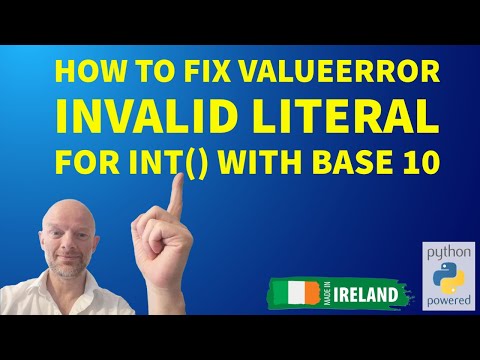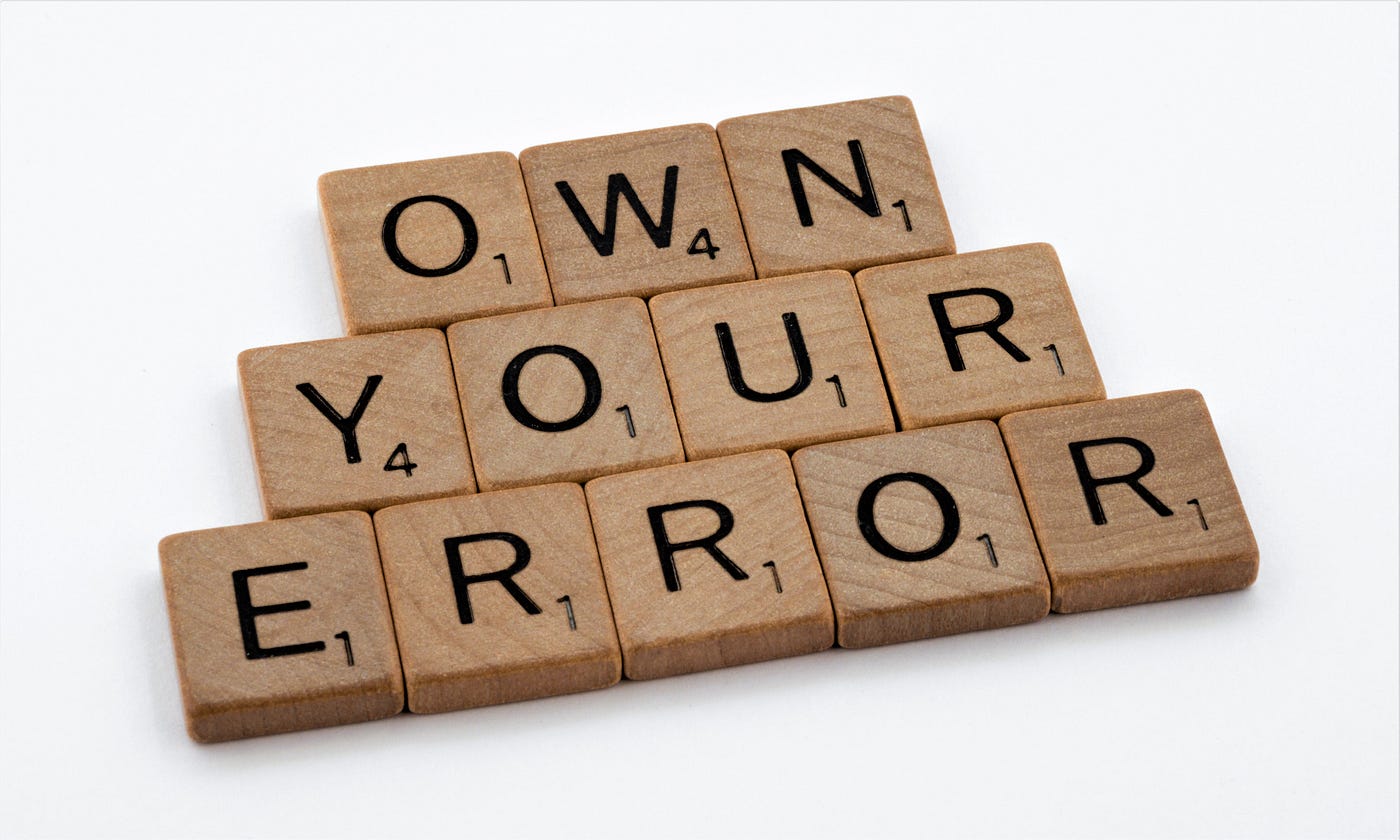Valueerror Invalid Literal For Int With Base 10
Common Causes of “ValueError: Invalid literal for int with base 10”:
1. Understanding the Error Message:
The error message “Invalid literal for int with base 10” indicates that the string provided as input cannot be converted to an integer using base 10, which represents the decimal numbering system. It is important to understand the error message before proceeding to resolve it.
2. Investigating the Input:
a. Missing or Extra Characters:
Check if the input string contains any missing or extra characters. The string should only contain the digits 0-9 and an optional sign (+/-) at the beginning.
b. Incorrect Formatting:
Ensure that the string is formatted correctly, without any special characters or spaces. The int() function expects a plain numerical value as input.
c. Non-Numeric Characters:
The int() function cannot convert strings that contain non-numeric characters. Make sure the string only consists of numeric digits.
3. Handling Leading or Trailing Whitespaces:
Strings with leading or trailing whitespaces can cause a ValueError. Trim any unnecessary whitespaces from the input string using the strip() method before attempting to convert it to an integer.
4. Dealing with Non-Integer Values:
Sometimes, the input string might represent a non-integer value. Consider the following scenarios:
a. Decimal Numbers:
If the string represents a decimal number, you may have to use the float() function instead of int() to convert it to a floating-point number.
b. Fractional Values:
Fractional values such as fractions or percentages cannot be converted directly to an integer. Parse the string to extract the desired numerical value.
c. Scientific Notation:
Strings in scientific notation (e.g., “1e+10”) cannot be directly converted to an integer. Use appropriate conversion functions or algorithms to handle such cases.
5. Removing Non-Numeric Characters:
a. Using Regular Expressions:
Regular expressions can be used to remove non-numeric characters from a string. Replace all non-digit characters using regular expression patterns or libraries like re.
b. Iterating through Each Character:
Write a custom function to iterate through each character in the string and check if it is a numeric digit. Build a new string with only numeric characters and convert it to an integer.
6. Catching Exceptions with Try-Except Blocks:
Use a try-except block to catch the ValueError and handle it gracefully. Display a user-friendly error message or perform alternative actions when the conversion fails.
7. Using Built-in Functions for Conversion:
Python provides built-in functions for converting variables between different types. Utilize these functions appropriately:
a. int():
The int() function can convert strings representing integers to integers. Ensure that the string contains only numeric digits and conform to the specified base.
b. float():
Use the float() function to convert strings representing decimal numbers to floating-point numbers.
c. str():
Convert other data types, such as integers or floats, to strings using the str() function.
8. Converting Base or Radix:
The int() function can accept an optional second argument representing the base or radix of the input string. Verify whether the input string is formatted in a non-decimal base (e.g., base 2 for binary or base 16 for hexadecimal) and adjust the base parameter accordingly.
9. Seeking Help from Community and Documentation:
If all else fails, reach out to the developer community or refer to the official Python documentation for further assistance. Many online forums and communities exist where experienced developers can provide guidance and solutions.
FAQs about “ValueError: Invalid literal for int with base 10”:
Q1: What does “ValueError: Invalid literal for int with base 10” mean?
A1: This error occurs when attempting to convert a string to an integer using base 10, but the string contains non-numeric characters or is incorrectly formatted.
Q2: How can I fix the “ValueError: Invalid literal for int with base 10” error in Python?
A2: There are several possible solutions, including understanding the error message, investigating the input for missing or extra characters, handling leading or trailing whitespaces, dealing with non-integer values, removing non-numeric characters, catching exceptions with try-except blocks, using built-in conversion functions, converting the base or radix, or seeking help from the community and documentation.
Q3: Can “ValueError: Invalid literal for int with base 10” occur in other programming languages?
A3: This specific error message is specific to Python’s int() function and base 10 conversion. However, similar errors may occur in other languages when attempting to convert strings to integers without proper formatting or containing non-numeric characters. The specific error message may vary depending on the programming language.
In conclusion, the “ValueError: Invalid literal for int with base 10” error arises when attempting to convert a string to an integer in Python. By understanding the error message and implementing the suggested solutions, developers can successfully convert strings to integers without encountering this error. Remember to carefully investigate the input, handle non-integer values appropriately, remove non-numeric characters, catch exceptions, and seek help from the community when needed.
How To Fix Value Error: Invalid Literal For Int() With Base 10
Keywords searched by users: valueerror invalid literal for int with base 10 invalid literal for int() with base 10, invalid literal for int() with base 10 in python, invalid literal for int() with base 10 là gì, ValueError: could not convert string to float, Could not convert string to float, Invalid literal for int() with base 10 excel, How to fix invalid literal for int with base 10 in python, Convert string to int Python
Categories: Top 15 Valueerror Invalid Literal For Int With Base 10
See more here: nhanvietluanvan.com
Invalid Literal For Int() With Base 10
The Python programming language provides users with a powerful integer conversion function called int(). This function allows developers to convert a string representing an integer to an actual integer type. However, there are instances when using int() with base 10 can result in an error message stating “invalid literal for int() with base 10”. In this article, we will explore the reasons for this error and present potential solutions to resolve it.
Understanding the Error Message
The error message “invalid literal for int() with base 10” typically occurs when the int() function fails to convert a given string value to an integer. The error suggests that the string is not a valid literal for integer conversion in base 10, which is the default base used by int() if no explicit base is provided.
Causes of the Error
1. Empty or whitespace-only strings: The most common cause of this error is when the string passed to int() is either empty or contains only whitespace characters. Since empty strings or whitespace cannot be converted to a valid integer, Python raises the “invalid literal for int() with base 10” error.
2. Non-numeric characters or symbols: Another common cause is when the string contains non-numeric characters or symbols. The int() function only works with strings that represent numeric values. If the string contains letters, punctuation marks, or any other non-numeric characters, the conversion fails and triggers the error message.
3. Leading or trailing whitespace: Extra whitespace at the beginning or end of the string can also lead to this error. Python treats leading and trailing whitespace as non-numeric characters, preventing the conversion from being successful.
4. Numeric strings with underscores: If the string contains underscores, it will also result in this error. While underscores are allowed in numeric literals, they must be placed between digits and not at the beginning or end of the string.
Resolving the Error
To resolve the “invalid literal for int() with base 10” error, we need to address the specific cause of the issue. Here are some approaches to fix the problem depending on the cause:
1. Empty or whitespace strings: Check the input string and ensure it is not empty, and trim any leading or trailing whitespace before passing it to int(). You can use the strip() method to remove leading and trailing whitespace.
2. Non-numeric characters or symbols: Identify and remove any non-numeric characters or symbols present in the string. This can be done using string manipulation methods such as isdigit(), isnumeric(), or regular expressions to filter out unwanted characters.
3. Numeric strings with underscores: Remove any underscores present in the string, but only if they are placed correctly between digits and not at the start or end. For example, if the string is “1_000_000”, convert it to “1000000” before passing it to int().
Frequently Asked Questions (FAQs):
Q1: Can the “invalid literal for int() with base 10” error occur with a non-empty string?
A1: No, the error is commonly associated with empty or non-numeric strings. However, if the string contains numeric characters along with non-numeric characters, the error may occur.
Q2: How can I handle non-numeric strings gracefully without triggering an error?
A2: You can use exception handling mechanisms such as try-except blocks to catch the ValueError exception raised by int(). This way, you can display a user-friendly error message or perform alternative actions when a non-numeric string is encountered.
Q3: Does the “invalid literal for int() with base 10” error occur when converting numbers in bases other than 10?
A3: No, this error specifically refers to issues encountered when trying to convert a string to an integer using base 10. If you want to convert numbers from different bases, you need to provide the appropriate base explicitly to the int() function.
Q4: Can I use the int() function with floating-point or decimal numbers?
A4: No, the int() function converts a string to an integer by discarding any fractional or decimal part. If you want to convert floating-point or decimal numbers, use appropriate functions like float() or Decimal().
In conclusion, the “invalid literal for int() with base 10” error occurs when the int() function encounters issues during the conversion of a string to an integer. By understanding the potential causes and applying the recommended solutions discussed in this article, developers can effectively handle and resolve this error, ensuring successful integer conversion operations in their Python programs.
Invalid Literal For Int() With Base 10 In Python
In Python, the int() function is commonly used to convert a string or number to an integer. It takes two optional arguments – the first being the string or number itself, and the second being the base in which the string or number is represented (default is 10). However, sometimes you may encounter an “invalid literal for int() with base 10” error. This article will explore what this error means, why it occurs, and how to handle it effectively.
Understanding the Error:
The error message “invalid literal for int() with base 10” indicates that the string or number provided to the int() function cannot be interpreted as a valid integer in base 10 (decimal) format. It suggests that the input contains characters or symbols that are not permissible within a base 10 numbering system.
Reasons for the Error:
There are several reasons why this error might occur. Let’s discuss a few common scenarios:
1. Non-numeric characters: If the string or number contains non-numeric characters, such as letters, special characters, or whitespace, the int() function cannot convert it to an integer. For example, int(“abc”) or int(“1a2b”) will raise the “invalid literal for int() with base 10” error.
2. Incorrect string formatting: If the string contains formatting characters, such as commas to separate thousands or a leading sign indicating positive or negative values, it will cause the int() function to fail. For instance, int(“1,000”) and int(“+10”) will trigger the error.
3. Empty or null strings: Passing an empty string or null value to the int() function will raise the same error. For example, int(“”) or int(None) will result in the “invalid literal for int() with base 10” error.
Handling the Error:
To handle the “invalid literal for int() with base 10” error, you need to ensure that the input string or number is correctly formatted for conversion to an integer. Here are a few recommendations:
1. Validate the input: Before calling the int() function, validate the input to ensure it only contains numeric characters or symbols appropriate for integer conversion. You can use regular expressions or conditional statements to perform the validation.
2. Remove non-numeric characters: If your input string contains non-numeric characters that are causing the error, you can remove them using the isdigit() or isnumeric() methods in Python. For instance, you can use int(“1a2b”.isdigit()) to eliminate non-numeric characters and then convert it to an integer.
3. Handle exceptions: Since the int() function raises a ValueError when encountering the “invalid literal for int() with base 10” error, you can use a try-except block to catch the exception and gracefully handle it. This allows you to display a custom error message or perform alternative actions, such as skipping the invalid input.
FAQs:
Q: Can I change the base for int() function other than 10?
Yes, the int() function allows you to specify a different base using the second optional parameter. For instance, int(“1010”, 2) interprets the input string as a binary number.
Q: Why am I still getting the error even if my input string only contains digits?
The error might occur if your input string is not properly formatted or contains leading/trailing spaces. Ensure that the string is stripped of whitespace using the strip() method before passing it to the int() function.
Q: How can I convert a floating-point number to an integer?
To convert a floating-point number to an integer, you can either use the int() function with the float as an argument (e.g., int(3.14)), which will truncate the decimal part, or you can use the math module’s functions, such as floor() or ceil(), to round the number before converting it.
Q: Is there an alternative function to the int() function?
Yes, if you are specifically dealing with converting strings to integers, you can also use the built-in int() constructor. It behaves similarly but provides more flexibility and error handling options.
In conclusion, the “invalid literal for int() with base 10” error can occur when the input string or number provided to the int() function is not formatted as a valid base 10 integer. By validating the input, handling exceptions, and removing non-numeric characters, you can effectively handle this error and perform successful integer conversions in Python.
Invalid Literal For Int() With Base 10 Là Gì
Introduction
When working with programming languages like Python, encountering errors and exceptions is a common occurrence. One such error is the “invalid literal for int() with base 10” error. This error indicates that a string cannot be converted into an integer variable because it contains characters or symbols that are not valid. In this article, we will delve deeper into the meaning of this error, understand its causes, and explore methods to resolve it.
Understanding the Error
The “invalid literal for int() with base 10” error is a specific exception that occurs when using the `int()` function to convert a string into an integer, but the string does not contain a valid numerical representation. The term “invalid literal” refers to the string not being a properly formatted number that can be converted to an integer with the specific base of 10.
Causes of the Error
There can be various causes for encountering this error. The most common reasons include:
1. Non-numeric Characters: The string being passed to the `int()` function may contain non-numeric characters such as letters, symbols, or spaces that cannot be interpreted as an integer.
2. Leading or Trailing Spaces: If the string contains leading or trailing spaces, it will result in an “invalid literal for int()” error. These additional spaces need to be eliminated before converting the string to an integer.
3. Decimal Point: Another common cause is when the string contains a decimal point. The `int()` function can only convert whole numbers, hence any string with a decimal point will produce this error.
4. Incorrect Formatting: The string may not be properly formatted as a number. It could be missing necessary digits, have multiple decimal points, or use incorrect notations, such as scientific notation.
Resolving the Error
To resolve the “invalid literal for int() with base 10” error, one needs to identify its cause and take appropriate action. The following strategies can be adopted to tackle this error:
1. Filter Out Non-Numeric Characters: Before calling the `int()` function, ensure that the string contains only numeric characters. This can be achieved by removing non-numeric characters using string manipulation techniques, such as using the `isdigit()` method or regular expressions.
2. Strip Leading and Trailing Spaces: If the string contains additional spaces, they need to be removed before conversion. Utilize the `strip()` or `replace()` functions to eliminate leading and trailing spaces respectively.
3. Handle Decimal Points: If the string contains decimal points and you do not require fractional values, it is advisable to round or truncate the number before converting it. This can be done using specific Python methods like `round()` or `math.floor()`.
4. Verify Proper Formatting: If the string is meant to represent a number, ensure that it is correctly formatted. Check for missing digits, multiple decimal points, or incorrect notations. Correct any formatting errors prior to conversion.
FAQs
1. How do I determine if a string can be converted to an integer?
Before applying the `int()` function, you can use the `isdigit()` method to check if all characters in the string are digits. If the method returns `True`, the string can be converted to an integer.
2. What if I need to convert a string containing decimal points into an integer?
If decimal points are present in the string and you want to convert it into an integer, you have a few options. One method is to multiply the number by a factor to shift the decimal point to the right, convert it to an integer, and then divide by the same factor to obtain the desired result.
3. Can the base other than 10 be used with the `int()` function?
Yes, the `int()` function allows for other bases apart from 10. By specifying the base as an argument, you can convert a string representing a number in a different base, such as binary or hexadecimal, into an integer. However, this error specifically pertains to the base 10 conversion.
4. Are there any alternative functions that can be used to convert a string to an integer without encountering this error?
Yes, there are alternative functions available, such as `float()`, `eval()`, or custom conversion methods, depending on the specific requirements and the string’s consistency. However, it is important to note that these functions may have different behavior and will not always produce the same results as the `int()` function.
Conclusion
The “invalid literal for int() with base 10” error occurs when attempting to convert a string into an integer using the `int()` function, but the string does not contain a valid numerical representation. By understanding the causes of this error and implementing appropriate resolution strategies, programmers can effectively overcome this issue. Remember to filter out non-numeric characters, handle decimal points, verify formatting, and address leading or trailing spaces for a successful conversion.
Images related to the topic valueerror invalid literal for int with base 10

Found 27 images related to valueerror invalid literal for int with base 10 theme







![SOLVED] ValueError: invalid literal for int() with base 10 – Be on the Right Side of Change Solved] Valueerror: Invalid Literal For Int() With Base 10 – Be On The Right Side Of Change](https://blog.finxter.com/wp-content/uploads/2021/02/int-1024x576.jpg)








![Getting ValueError: invalid literal for int() with base 10: '[|3|4]' - Help - Let's Encrypt Community Support Getting Valueerror: Invalid Literal For Int() With Base 10: '[|3|4]' - Help - Let'S Encrypt Community Support](https://global.discourse-cdn.com/letsencrypt/original/3X/2/6/26bc73caa17062799af0bb4c1695ab0fdc663ee0.png)













Article link: valueerror invalid literal for int with base 10.
Learn more about the topic valueerror invalid literal for int with base 10.
- ValueError: invalid literal for int() with base 10: ” – Stack Overflow
- Lỗi ValueError: invalid literal for int() with base 10
- Python ValueError: invalid literal for int() with base 10
- ValueError: invalid literal for int() with base 10 in Python
- [Solved] Error: ValueError: invalid literal for int() with base 10
- Python ValueError: invalid literal for int() with base 10 Solution
- How to fix this ValueError invalid literal for int with base 10 …
- ValueError: invalid literal for int() with base 10
- ValueError: Invalid Literal For Int() With Base 10 In Python
- Invalid Literal for Int With Base 10: A Debugging Guide
See more: https://nhanvietluanvan.com/luat-hoc